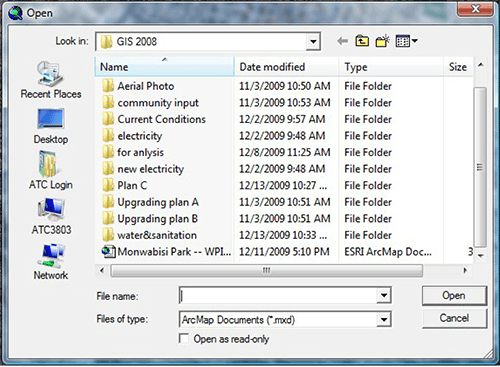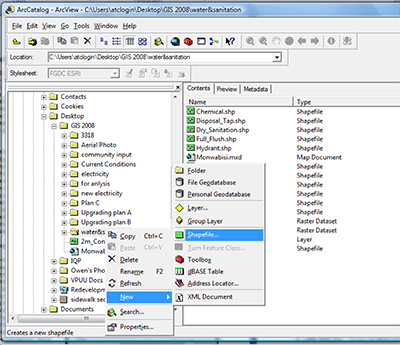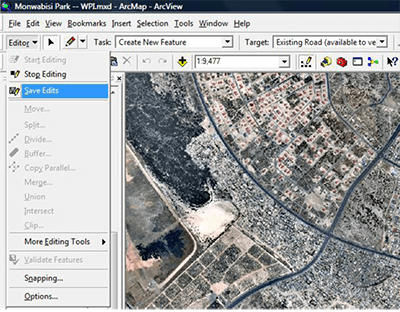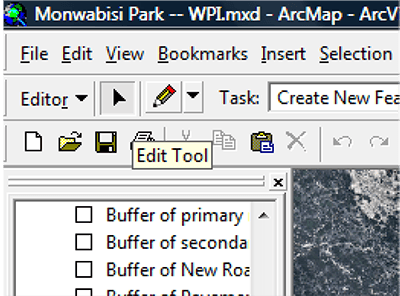- Act III Scene I: Adding Color (November 16, 2015)
- Slideshow Test
- “Bawawethu” (December 3, 2015)
- Social Enterprise
- Acronym Dictionary
- Background
- About CTPC
- Blog
- Resource Library
- Welcome!
- Projects
- Projects Overview
- 2015
- Expanding Early Childhood Development Opportunities in an Informal Settlement
- Exploring New Outreach Models for Early Childhood Development
- Fostering Community at the Canterbury Street Lot
- Background Research
- Philosophy Behind Helping the Homeless
- Belonging and its Psychological Impact on Street People
- Establishing Social Inclusion in the Street Community
- Understanding Homelessness’ Role in Urban Development
- Investigating the Effect of Public Spaces on Cities
- Creating a Sense of Community Through Green Areas
- Commemorating the Street Community’s Lives
- Partnerships
- Planning
- Outcomes
- Resources
- Background Research
- Providing More than a Meal at Service Dining Rooms
- Upgrading the K2 Informal Settlement through Community Collaboration
- Background Research
- Planning Pages
- The Partnership
- K2 Journey
- Act I Scene I: New Beginnings (October 22, 2015)
- Act I Scene II: Getting lost in the K2 Maze (October 23, 2015)
- Act I Scene III: The Outsiders (October 26, 2015)
- Act II Scene I: Touring Tuesday (November 10, 2015)
- Act II Scene II: Trouble in K2 (November 16, 2015)
- Act III Scene I: Luncheon: A Change of Scenery (November 17, 2015)
- Act III Scene II: Adding Colour (November 20, 2015)
- Act III Scene III: “Bawawethu” (December 3, 2015)
- Act III Scene IV: Financial Contribution: One Step at a Time (December 7, 2015)
- Project Outcomes
- Project Resources
- References
- Women’s Empowerment through Increased Access and Understanding of Technology
- Background Research
- Partnership
- Planning
- Process Narrative
- Outcomes
- Project Resources
- References
- 2014
- Empowerment through Improving Facilities at the Sizakuyenza Safe House
- The Big Issue Goes Online: Creating a Vendor-Run Profiling Program
- Early Childhood and Community Development in Flamingo Crescent
- Background Research
- Challenges of Early Childhood Development in South Africa
- Crèche Regulations and Finances
- Best Practices for Crèche Development
- Determinants of Crèche Quality
- The Effect of Playground Design on Child Development
- The Effect of Playground Design on Communities
- Developmental Benefits of Recreational Space
- Public Space Inequality in South Africa
- Recyclable Playgrounds
- Flamingo Crescent Informal Settlement
- Planning and Methods
- The Partnership
- The Play by Play
- Project Outcomes
- Resources
- Background Research
- An Entrepreneurial Initiative for Distributing Energy Efficient Products in Low Income Communities
- Background
- Planning
- Partnerships
- Project Narrative
- Act 1: Adapting our Project
- Act 2: Finding Distribution Centers
- Scene 1: Creating Interest in Wonderbags
- Scene 2: First Trip to an Informal Settlement
- Scene 3: Looking for New Products
- Scene 4: Gathering Community Energy and Crèche Information
- Scene 5: A Visit to Flamingo
- Scene 6: Just Do It: Three Crèche Visits
- Scene 7: The Reality of Low Income Areas
- Scene 8: A College for Kiddies
- Act 3: Establishing Pilot Programs
- Scene 1: Pilot Program
- Scene 2: A Second Pilot Program
- Scene 3: Sustainable Sales
- Scene 4: Low Income Energy Services Task Team Meeting
- Scene 5: Lunch at the Crèche
- Scene 6: Exploring Other Products
- Scene 7: Graduation
- Scene 8: Enjoying Electricity
- Scene 9: Collaboration for Future Implementation
- Scene 10: Keep Smiling
- Epilogue
- Outcomes
- References
- Expanding Health, Education, and Wellbeing Services and Analyzing the Effects of Underlying Social Complexities on WaSH-UP
- Background Research
- Mission & Objectives
- Cast of Characters
- Process Narrative: Our Journey
- Project Outcomes: Not Just Toilets Anymore!
- Epilogue
- WaSH-UP Sustainable Livelihoods and Business Operations
- Mission and Objectives Overview
- Background Research
- Informal Settlements in South Africa: Langrug Community
- Shared Action Learning (SAL)
- Community Assets
- What Business Institutions/Models Would Best Serve the Community?
- How to Start a Small Business in Informal Settlements
- Possible Models for Small Businesses and Savings Groups
- Ethical Considerations
- Research Questions
- Sources and References
- The Partnership
- Acts and Scenes
- Project Outcomes
- Reflection and Growth during the IQP Journey
- 2013
- Blue Sky Recycling Programme
- Community Mobilisation Through Reblocking in Flamingo Crescent
- The Partnership
- Welcome to Flamingo Crescent
- Background Research
- Methodology: Shared Action Learning
- Project Narrative
- Act 1: Trial and Error
- Scene 1: First Meeting with Levona
- Scene 2: An Introduction to 7de Laan
- Scene 3: Beginnings of Turmoil
- Scene 4: Finding Hope
- Scene 5: A Motivation for our Work
- Scene 6: Red Hill Settlement Tour Highlights Opportunities
- Scene 7: City Mission Visit Illuminates the Option of Reblocking
- Scene 8: Meeting the Key Planners
- Scene 9: First Weekly Meeting Causes Confusion
- Scene 10: Subcouncil Meeting Eases Worries
- Scene 11: A Raw and Unexpected Story
- Scene 12: Ethiopian Experience
- Scene 13: Shack Demolition
- Scene 14: Engineering the Future
- Scene 15: Public Meeting in 7de Laan
- Act 1 Reflection
- Act 2: Testing the Waters
- Scene 1: A Taste of Flamingo
- Scene 2: Getting to know the Community Leaders
- Scene 3: Cluster Meetings in Flamingo
- Scene 4: Introduction to Mtshini Wam
- Scene 5: Kuku Town Visit Provides Example
- Scene 6: All Parties Come Together
- Scene 7: Library Networking
- Scene 8: Communication and Enumeration
- Act 2 Reflection
- Act 3: Taking Care of Business
- Scene 1: Meeting the Contractors
- Scene 2: Breaking Ground
- Scene 3: If You Build It They Will Come
- Scene 4: Visiting ELRU Opens Doors for a Crèche in Flamingo
- Scene 5: A Living Virtue
- Scene 6: Meeting a New Potential Stakeholder
- Scene 7: Meeting with the CECD: “Let’s do it.”
- Scene 8: Bringing Green Innovation to the Crèche
- Scene 9: Final Stakeholder Meeting
- Scene 10: Saying Goodbye to Flamingo Crescent
- Act 3 Reflection
- Student Reflections
- Act 1: Trial and Error
- Resources and References
- Community Mobilisation Through Reblocking: An Interactive Upgrading Anthology
- Early Childhood Development Connection
- MGV Park Redevelopment
- Project Partners
- Project Outcomes
- Background Research
- Planning and Methods
- Process Narrative
- Act 1: The Beginning
- Scene 1: Arriving in Maitland Garden Village
- Scene 2: First Sight
- Scene 3: Meeting with the Project Members
- Scene 4: Community Survey
- Scene 5: Working with Co-Researchers
- Scene 6: Village Day
- Scene 7: Monday’s Meeting with Jude
- Scene 8: Monday’s Meeting with Co-Researchers
- Scene 9: Discouraging Moment
- Scene 10: Setting up the Fantasy Playscape Activity with the Crèche
- Act 2: A New Hope
- Act 3: Getting the Ball Rolling
- Personal Reflections
- Act 1: The Beginning
- Resources
- WaSH-UP
- 2012
- Capacity Building of a Community Based Organisation in Maitland Garden Village
- Meet the Team
- Background Research and Preparation
- Ethical Considerations
- Cape Town Project Centre Context
- Sponsors
- Project Work on Site
- Cast of Characters
- Meetings
- Organisational Profiles
- Act 1: Finding our Footing
- Scene 1: First Encounter with Maitland Garden Village (MGV)
- Scene 2: Tour of Maitland Garden Village
- Scene 3: Ronell’s Sight into the Help Centre
- Scene 4: First Look at the Potential Venue
- Scene 5: Getting to Know the People We are Working With
- Scene 6: Tour Of Oude Molen
- Scene 7: Village Day
- Scene 8: Monday Morning Meeting
- Scene 9: Meeting at MGV Community Centre
- Reflection and Moving Forward
- Act 2: Building Support
- Act 3: Strategy and Execution
- Envisioning a Black River Pathway: Creating a Heritage Destination through Social Development
- Research & Planning
- Cast of Characters
- Ethical Considerations
- Acts and Scenes
- Act One: Getting Started
- Scene Eight: Maitland Garden Village Day
- Scene Five: Faces of Oude Molen Eco Village
- Scene Four: First Meeting with our Sponsors
- Scene One: The First Pathway Experience
- Scene Seven: Visiting Company’s Garden
- Scene Six: A Presentation to our Sponsors
- Scene Three: Walking the Desire Lines
- Scene Two: Tour of Maitland Garden Village
- Act Two: Developing Relationships
- Act Three: Absorbing Information
- Act Four: Meeting with the City
- Act Five: Wrapping Up
- Act One: Getting Started
- Resources & References
- Laying the Foundation for a Resilient Partnership: Innovative Upgrading in the Informal Settlement of Langrug
- Welcome to Langrug
- Background Research
- Cast of Characters
- Primary Project Focuses
- Acts and Scenes: Our Observations and Reflections
- Act 1: Jumping Right In
- Act 2: Planning and Moving Forward
- Discussing the Needs of the Community and How the MPC Can Help
- Making the Decision to Move Forward with the Multi-Purpose Centre
- Reblocking Guidebook Discussion
- Re-Measuring for Reblocking
- Spacing Out ReBlocking
- Fire In Zwelitsha
- Lunch Scene
- Working Team Arguments
- Playing Games
- Introductions at the Municipality: A Revelation
- Amanda Realises the Importance of Documentation
- The Working Team Presents to the Municipality
- How Simple Office Supplies Can Spark Progress
- Further Difficulty with Planning
- Learning How to Do (and Teach) a Cost Analysis
- Act 3: Making Decisions
- Working Group Expresses Community Urgency
- Impromptu Meeting with Dawie
- Meeting with Scott: Ending a Day of Confusion
- Partnership Meeting 13 November
- Alfred’s Presence in Langrug
- Realising the Greywater Cleaning Problems
- Working Group’s Apparent Lack of Trust in the Municipality: Putting Together a Report
- Tensions Regarding Community Contributions and the MPC
- Act 4: WaSH Construction
- Act 5: Our Reflections
- Rooftop Gardens for Sustainable Livelihoods in Cape Town
- Supporting Reblocking and Community Development in Mtshini Wam
- Capacity Building of a Community Based Organisation in Maitland Garden Village
- 2011
- Addressing Greywater Management Issues in Langrug Using a Sustainable Reiterative Process
- Black River Corridor: Visions for Restoration and Recreational Use
- Envisioning the Future Development of Oude Molen Eco Village
- Supporting Asset Based Community Development in Maitland Garden Village
- Chapter 1: What is the best way to aid a community in a sustainable and positive way?
- Chapter 2: How does one lay the foundation for a mutually beneficial relationship?
- Chapter 3: What communication tools can be utilised to gauge a community’s aspirations?
- Chapter 4: What is the best way to show gratitude and initiate community driven action?
- Chapter 5: What is the best approach to gain governmental participation in preparation for a community programme?
- Chapter 6: How do you structure a meeting so the attendees become participants and truly invested?
- Chapter 7: How can MGV continue to develop through mutually beneficial relationships with neighbouring communities?
- Epilogue: What does the future hold?
- Acknowledgements
- Team Interviews
- Photo Gallery
- Downloads and References
- Sustainable Livelihoods Through Beekeeping
- WaSHUp: Innovating Water Sanitation and Hygiene Upgrading in Langrug
- Langrug
- Meet the Team
- Water and Sanitation in Langrug
- Mapped Facility 1
- Mapped Facility 10
- Mapped Facility 2
- Mapped Facility 3
- Mapped Facility 4
- Mapped Facility 5
- Mapped Facility 6
- Mapped Facility 7
- Mapped Facility 8
- Mapped Facility 9
- Mapped Facility 11
- Mapped Facility 12
- Mapped Facility 13
- Mapped Facility 14
- Mapped Facility 15
- Mapped Facility 16
- Mapped Facility 17
- Mapped Facility 18
- Mapped Facility 19
- Mapped Facility 20
- Mapped Facility 21
- Partnerships in Langrug: A Model for the Future
- Community-Driven Development
- Community WaSHUp Spaces
- Multi-Purpose WaSHUp Facility
- Future
- Supplemental Material
- 2010
- Profiling Community Assets
- Collaborative Construction
- Stormwater Management
- Strengthening Spaza Shops
- Supporting Early Childhood Development
- Initiation Site Development
- Meet the Team
- Project
- Good Hope Initiation Site Proposal
- Objectives
- Background
- A Historic Perspective of the Initiation Ritual
- Challenges of Initiation
- Limited Physical Space and Lack of Seclusion
- Building and Burning of Initiation Huts
- Challenges of Initiation in an Urban Environment
- Economic Challenges for Initiates
- Health Concerns during the Initiation Process
- Malnutrition during the Seclusion Period
- Psychological Challenges Faced by Initiates
- Conflicts Between Traditional Leaders and Authorities
- Government Actions in the Initiation Community
- Methodology
- Project Resources
- Acknowledgements
- Co-Researchers
- 2009
- Buildings
- Communications
- Economy
- Energy
- Gardens
- Mapping and Planning
- Water & Sanitation
- Accomplishments
- Background
- Current Conditions and Common Practices within Monwabisi Park
- Establishing Collaborations
- Future Testing
- History of Water and Sanitation in South Africa
- Learning by Example: Case Studies
- Meet the Team
- Methodology
- Monwabisi Park as a Model for Redevelopment
- Our Partners
- Project Resources
- The Sanitation Centre
- 2008
- 2007
- Contact Us
- Communications
- WaSH
- First Week Plans
- Pre-Travel Planning
- Interactions
- Meeting Strategies
- Shared Action Learning
- Mission Statement and Objectives
- Methodology
- Ethics
- Interview Planning
- Week One Plan
- Beyond Week One
- Cast of Characters
- Welcome to Langrug
- Key Areas of Focus
- References
- CTPC Context
- Setting the Stage
- Sponsor: Community Organisation Resource Centre
- Sponsor: Department of Integrated Human Settlements
- Cast of Characters
- Project Planning
- References
Arc GIS
Arc GIS
ArcView, or ArcGIS, is a Geographic Information System program that was used in 2008 by the Mapping Team students to store, analyze, and manage collected data. This data was presented on a map and was used as an easy visual representation. The team used an aerial photo of Monwabisi Park provided by the city, and digitized information collected by the students and resources, such as the Water & Sanitation Department, onto the image. This process takes time to execute, and without a strong understanding of the software, can be extremely difficult to master. The 2009 Planning Team used ArcView in a similar manner as the 2008 team. Because ArcGIS has a significant learning curve, the information below details how to use the program in an effort to aid students in the years to come.
Within ArcView, there are two programs that were used together to complete the maps. One is ArcMap and the other is ArcCatalog. ArcMap is where all the data is stored and where all the data can be accessed. It is where the original aerial photo is located and where the overlying data is organized. Since the data collected in the past year had been displayed in ArcMap originally, it can now be opened and utilized in the future on ArcMap by performing a few simple steps, as seen below. ArcCatalog is used to create the different shapefiles that are represented on the aerial photo in ArcMap. These shapefiles can represent three different types of data. First is a point, which represents a specific location, such as an address. The second is a line, which represents an area boundary, such as a contour line. The third is a polygon, which represents an area with similar characteristics, such as an area of land that was once a landfill. Once the data is created in ArcCatalog, it can then be managed and displayed in ArcMap. The following information includes steps taken by the 2009 Planning Team in order to open existing files, create new data onto the existing files, and edit and manage the data.
Opening the Monwabisi Park GIS Files
- Open ArcMap with a new template.
- Open aerial map with existing data (shapefiles and layers) from external hard drive in the GIS 2008 file (Figure 1).
- The main ArcMap file is called Monwabisi Park – WPI
- The shapefiles may not appear at first because they could be saved in different folders. In order to display these files, you must locate them on the hard drive.
- Click on the box next to the file which does not appear. There will be a red exclamation point also next to the box.
- An “Open” window will appear. Locate and open the file from the hard drive. You may have to connect to the hard drive first.
- Make sure all of the shapefiles are located and are open.
- Save all of the files (Monwabisi Park – WPI and all corresponding shape files) into one folder. This will allow all files to appear when the aerial photo is opened, and will prevent having to locate them again.
The files that were created in 2008 include locations of proposed roads, water taps and toilets, lighting fixtures, shebeens, redevelopment seeds, bus stops, etc. This year, we have collected a significant amount of new data to add on to last year’s.
Adding New Data
- Open ArcCatalog along with the Monwabisi Park – WPI file on ArcMap.
- Open the GIS 2008 file (all existing data and Monwabisi Park – WPI file) into ArcCatalog.
- Choose an existing shapefile layer that you would like to add to. For example, if you want to add in the water pipeline, you would choose the water & sanitation layer.
- Right click that chosen layer
- Click New – Shapefile (Figure 2)
- Name the new file and choose the type of file (dot, line, polygon).
- Edit the coordinate system by importing one off of an existing file. Under Spatial Reference in the “Create New Shapefile” window, click Edit, then Import, then specific file. Make sure the file chosen matches the coordinate system of the aerial photo (LO 19).
- Click apply. This new file will appear under the specified layer.
- Click on the newly created file and drag to the ArcMap.
- In ArcMap, start digitizing the new data by right-clicking on an existing tool bar and selecting the Editor tool bar.
- Click start editing
- Click the folder in which you had just added the new shapefile (Figure 3).
- Click Ok, then start editing.
- Make sure the first drop down bar in the Editor toolbar is set to “Create New Feature”.
- Choose the correct target (the new layer you had just created in ArcCatalog) in the second drop down bar.
- Click the pencil to draw the shapefile onto the aerial photo.
- Once you are done digitizing information, click Save Edits, and then Stop Editing in the Editor toolbar (Figure 4).
|
|
|
|
|
When data is collected by field observation or by having residents of Monwabisi Park locate certain things on a map, digitizing the information gathered in this method is relatively simple. It may take a long time if there are many points or lines, but it is very accurate. Once the data is recorded onto the map, it can then be managed and edited.
Editing Data
- Changing data point shape/color/etc.
- Double click on the point in the left column that you wish to change. There you can change all of the properties.
- Edit layer or file properties
- Right click on the file in the left column. Click on Properties at the bottom.
- Label features
- If a file has labels corresponding with it, such as contour lines and their measurements above sea level. Right Click on the file in the left column. Click on Label Features.
- Deleting data
- With Editor tool bar, click on the arrow in the toolbar, click specific data point, line, or polygon, and click delete on the keyboard. (Figure 5)
Arc GIS Data Available
As this data is contained in a very large file, our Arc GIS data is not available online. To request some or all of the information, please contact us at ctpc@wpi.edu.







